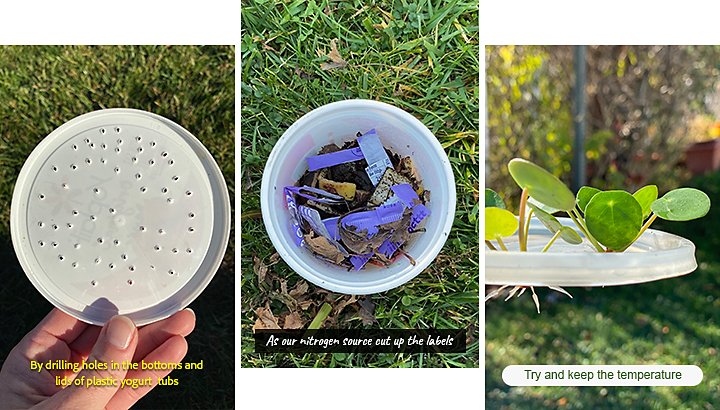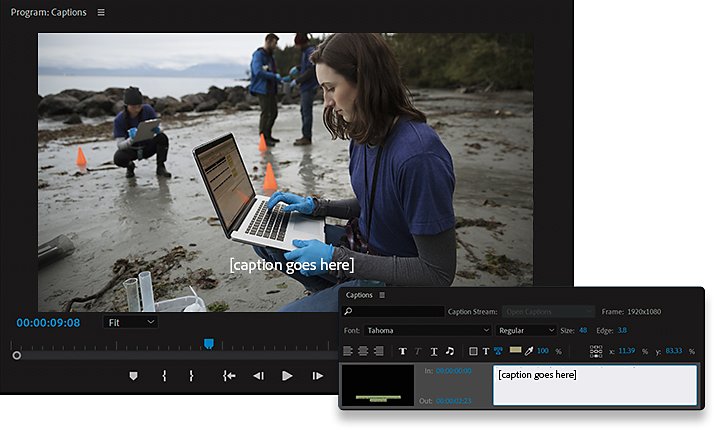Create science videos to make learning fun.
Explore how to make science come to life onscreen with learning videos about everything from the big bang to black holes.

What is a science video?
Science videos are usually short clips that explain science concepts, ideas, or experiments to a given audience. With science, it’s often easier to show than to tell. Video is a great way to introduce kids to the dramatic effects of chemical reactions or to show off just how big the solar system is.
YouTube is filled with science channels devoted to explaining the wonders of the natural world and is a go-to resource for learners who want to see science in action. Videos can be useful for a teacher looking for supplemental material for their lesson plans, students studying for a test, or people who just want to find out about something new.
Know your topic and keep it short.
Science videos work best when you’re clearly describing a specific topic or experiment. Because so many topics are enormous, it can be tempting to go off into digressions or delve into details during a video. However, if you’re making learning material for high school students or a younger audience, you have to hold their attention and make sure they understand. Stay focused.
If you’re doing a video that explains a science experiment, break it down into well-defined steps. Outline ways that students or other learners can do it themselves and achieve the same results. Replicating results is part of the scientific method, and if your viewers can replicate what you do onscreen, they’ll have a greater appreciation and understanding for what you’ve taught them.
If you’ve made videos about related topics, link to them. A video about the circulatory system could include links to the respiratory and digestive systems, and a video about ecology could link to another video about climate change. Group videos together into a YouTube playlist or your YouTube channel, and make sure your new work calls back and links to your old work.


Know your audience.
Science videos are useful for audiences of all age groups, from young kids to college graduates. When you set out to make a science video, you need to decide who it’s for and how much basic knowledge that audience will have. A third-grader will have much less context than a high school student or fellow science instructor.
Regardless of your audience, use simple, direct language as much as possible. Avoid technical jargon if you can, and if you do have to use technical terms, define them in a way your audience will understand.
Use and cite the right sources.
Accuracy and credibility are very important for science media. When doing research, use trusted sources like publications from academic institutions and primary sources as much as possible. Avoid using sources that are branded, commercial, or agenda-driven. “Really double- and triple-check the resources you’re using,” says science educator Jessica Purcell. “Make sure they’re credible and unbiased.”
Cite your sources. Established science YouTube channels like CrashCourse and Veritasium will have a small bit of text pop up whenever the speaker makes a factual claim, with a link to the source. Link to all of your sources in the YouTube video description and on whatever other pages you use to promote the video. This not only bolsters your own credibility and trustworthiness, but it also provides more resources to viewers who want to learn more about the topic and go deeper.

Be credible and accessible.
If you want students to take you seriously or teachers to include you in their lesson plans, you have to be transparent about who you are. If you are a PhD or grad student, say as much in your video. However, if you’re simply a motivated person with a DIY YouTube channel, don’t be ashamed. Identify yourself as a science communicator or science popularizer.
Accessibility is also very important. “Make sure that there’s some way that the viewer can reach out to you and ask you questions,” says Purcell. Be ready to direct curious watchers to reading material or other resources where they can learn more and discover just how amazing the world of science really is.

Images from Jessica Purcell of Thoughtfully Sustainable
Make science accessible with captioning.
It’s always important to make your videos accessible and understandable to your audience, but that’s especially the case with science videos.
“Always use captioning,” says Purcell. “Make sure that video is accessible to as many people as possible.”
Science videos are more likely to introduce terms that the audience is hearing for the first time. Adding captions not only makes videos accessible for people who have difficulty hearing, but it also makes scientific and technical language easier to grasp. Audiences are more likely to remember important terms if they can see them onscreen as you’re talking about them.
Adobe Premiere Pro support captioning and adding text to the screen so that students and other learners can get the most out of your work and better understand the scientific concepts you unfold before them.

Create science videos with Premiere Pro.
Premiere Pro includes all of the tools you need to make professional-quality educational videos. Shoot and edit video, add audio and subtitles, and create files optimized for major sharing platforms like YouTube and Vimeo. Give your science videos an edge with popular effects like whiteboard animation, and turn your videos into animated GIFs to promote your work.
And that's just scratching the surface of what you'll find in Premiere Pro. The industry standard for film editing is great for adding effects and gives you many tools for editing audio too.
Contributor
Do more with Adobe Premiere Pro.
Make visually stunning videos virtually anywhere — for film, TV, and web.
You might also be interested in…
Educate and inform with explainer videos.
Find out what goes into a good explainer video and how to effectively educate your audience.
Experimenting with video effects.
Dive into popular post-production effects, and explore the moods and styles each can achieve.
Understanding camera shots in film
Explore the most common camera shots, and learn when and how to use them to greatest effect.
Find out how to get into vlogging and build an audience.
Get Adobe Premiere Pro
Create flawless productions with the industry-leading video editing software.
7 days free, then CAD $29.99/mo.



